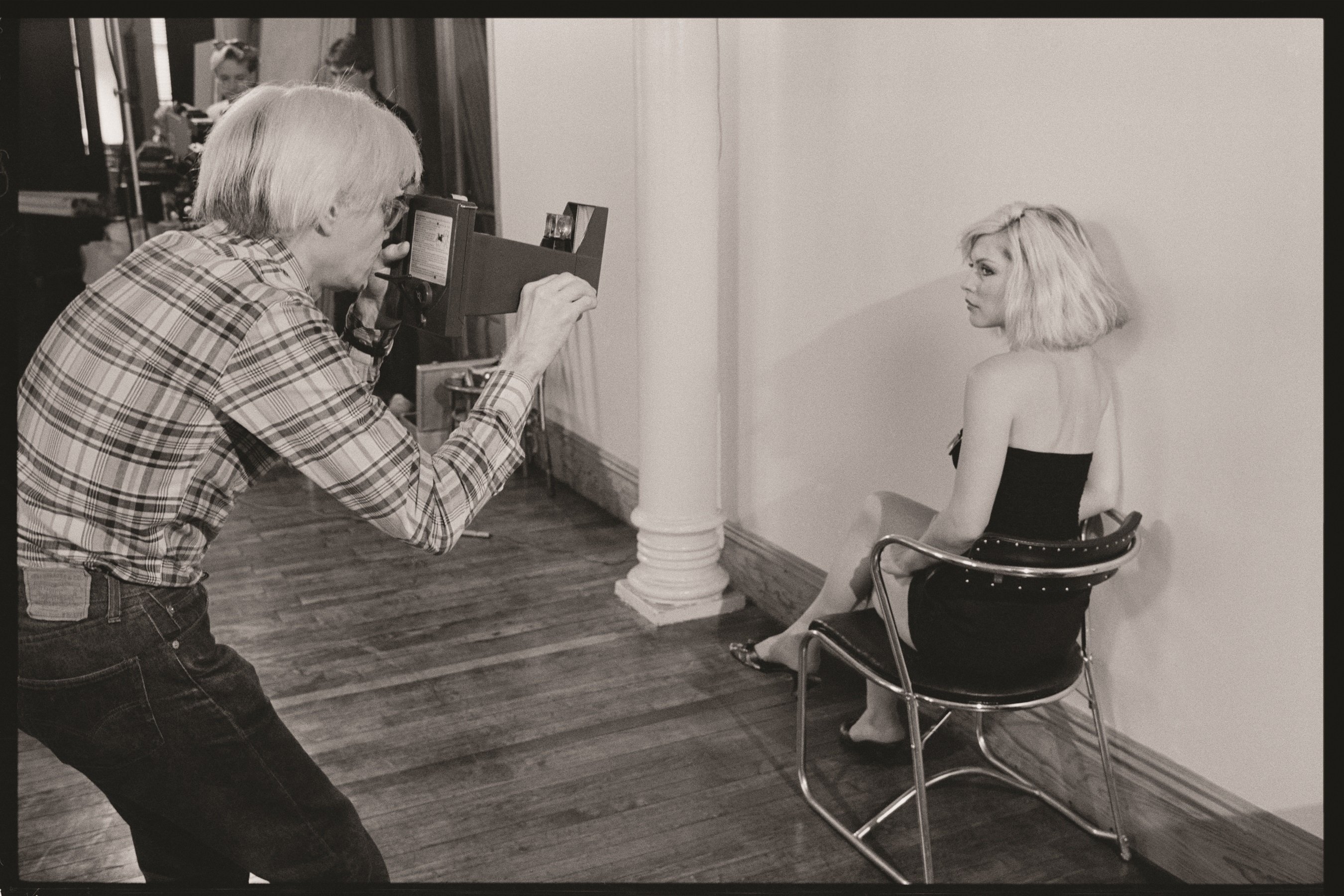
I’ve been thinking about Andy Warhol and what an impact he had on my life. Andy was the master of blurring the line between art and commerce. His art played with the conventions of commerce—marketing, mass production, branding, popular culture, advertising, celebrity. He also blurred the line between serious and playful. He was very serious about his work, but he approached it with a sense of humor. His work ethic was incredible. He would wake up early every day and go to his studio and paint, break for lunch, and work all afternoon—often spending hours on the phone—then at night he would always go out and socialize. He went everywhere. In fact, I first met him—and his dazzling entourage—when I was waiting tables at Max’s. I admired Andy so much. Like Andy, I felt the influence of Marcel Duchamp and a kinship to Dada and Popism, which became foundational to what I was creating.
To my amazement, we actually became acquainted. Chris [Stein] and I found ourselves on Andy’s invitation list. He would ask us to dinner sometimes. He didn’t eat much; he’d often cover up his plate with a napkin and take it with him and leave it on a ledge somewhere for a hungry street person. Later on, he invited us to his parties at the Factory on Union Square. Andy would invite all kinds of people from all kinds of backgrounds, uptown, downtown, artists, socialites, eccentrics, you name it. Andy, in his way, was very sociable and hung around with any-and everybody. One of his great skills was that he was a very, very good listener. He would sit there and suck all of it in. His curiosity was endless. He was also extremely supportive of new artists. Chris and I adored Andy—and to find out that he was a fan of ours was heavenly.
Andy put me on the cover of Interview magazine and he threw a party for us at Studio 54 when “Heart of Glass” went to number one in America. Now that we weren’t on the road, we had gotten to know him a little, and the idea of Andy’s doing my portrait came up; somewhere, at some point, Andy had remarked that if he could have anyone else’s face, it would be mine.
How it worked was that first Andy took some photos of you. He used one of those unique Big Shot Polaroid cameras that looked like a shoebox with a lens on it. The Big Shot was designed for portrait use only—and the quality of the shots was often striking. Perfect for Andy. After taking the Polaroids, he would show them to us and ask quietly—Andy was very soft-spoken—“Well, which one would you like?” I saw a couple that I thought were good but I said, “That’s really up to you.” He’s the artist; it seemed to be the safest thing to have him choose. I’ve lived with that Andy Warhol portrait for a long time now, so I’m much more used to it, but seeing all these portraits of yourself for the first time, by an artist who was so important to you, was startling. I guess I was just stunned. And humbled. Over the years, Chris and I came across a lot of those cameras from the early seventies and we would always buy them for Andy. We’d find them in junk stores at around twenty-five cents a pop. He’d always be very grateful. The portrait itself has taken on a life of its own—reproduced countless times and exhibited in numerous galleries worldwide. I still have that original Warhol. I can’t imagine parting with it. Well, I will be parting with it briefly next year, when I loan it to the Whitney for a retrospective show of Andy’s work.
Debbie Harry and Andy Warhol. Photo: Chris Stein.
Later, Andy called and asked me to model for a portrait he was going to create live, at Lincoln Center, as a promotion for the Commodore Amiga computer. It was a pretty amazing event. They had a full orchestra and a large board set up with a bunch of technicians in lab coats. The techs programmed away with all the Warhol colors, as Andy designed and painted my portrait. I hammed it up some for the cameras, turning toward Andy, running my hand through my hair, and asking in a suggestive Marilyn voice, “Are you ready to paint me?” Andy was pretty hilarious in his usual flat-affect way, as he sparred with the Commodore host.
I think there are only two copies of this computer-generated Warhol in existence and I have one of them.
From Face It by Debbie Harry. Copyright 2019 by Debbie Harry. Reprinted by permission of Dey Street, an imprint of HarperCollins Publishers.